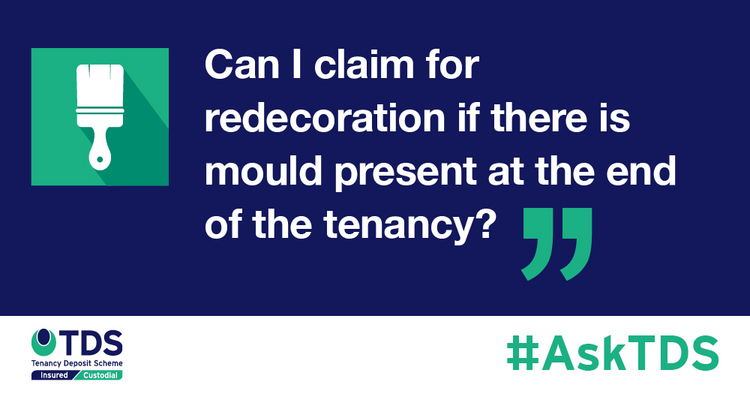
This article has been written in response to a landlord’s query: “Can I claim for redecoration if there is mould present at the end of the tenancy?”
As spring approaches, landlords may want to think about refreshing their properties, such as redecorating or replacing carpets in between tenancies. When redecorating a property, it is important to ensure any problems with condensation, damp or mould are correctly treated and dealt with prior to the tenancy commencing to avoid any reoccurrence.
At TDS, we sometimes see disputes where the landlord wants to make a claim from the tenancy deposit because the decoration of a property has been damaged by blackening or mould. If a landlord or agent wishes to submit a claim such as this, it is important that they have evidence to show the condition of the property both prior to and at the end of the tenancy. An adjudicator would look for clear evidence that any blackening or mould has happened during the length of the tenancy and that its presence is due to a lack of preventative measures by the tenant. If there is no evidence that the mould or damp was caused by the tenant’s actions, it would be difficult for an adjudicator to make an award to the landlord.
Landlords and agents should also consider the age of the decoration in the property; if it was newly decorated prior to the tenant moving in then this should be stated on the dispute application form so that the adjudicator can take this into consideration should an award be made to the landlord.
When submitting evidence for a redecoration claim, landlords and agents should obtain a selection of quotes or invoices from contractors to support the amount they are claiming for and submit these alongside the key documents such as tenancy agreement, check-in and check-out reports.
An important point to note when submitting a claim for redecoration is that a landlord cannot expect a property to be returned in a better condition than it was at the start of the tenancy, this is classed as betterment. To avoid betterment landlords should be realistic in the amount being claimed, with consideration to the age of the decoration and the number of tenants in the property.
Tenancy Deposit Scheme (TDS) is a government approved scheme for the protection of tenancy deposits; TDS offers both Insured and Custodial protection and also provides fair adjudication for disputes that arise over the tenancy deposits that we protect.
We provide invaluable training in tenancy deposit protection and disputes for agents and landlords through the TDS Academy as well as joining with MOL to provide the Technical Award in Residential Tenancy Deposits.
TDS Insured Scheme: where a TDS member can hold the tenancy deposits as stakeholder during the term of the tenancy.
TDS Custodial Scheme: where TDS hold the deposit for the duration of the tenancy.
TDS Academy: TDS provides property professionals with invaluable training in tenancy deposit protection and tenancy deposit disputes.
TDS can only comment on the process for our scheme, other deposit protection schemes may have a different process/require different steps. Content is correct at the time of writing.